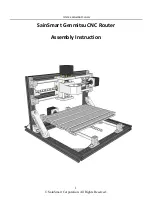
TOPEX Bytton (HSPA+ / LTE)
ByttonLTE(full)_genericUsermanual_sw306FAS_revN.1.docx
Page: 80 / 290
5.2.5 DHCP Settings
Settings for the DHCP server of the local network, servers used for DNS, and MAC addresses filtering:
Figure 5-24: LAN webpage – DHCP Server.
DHCP Server
:
Enabled
, Disabled or Forward to.
By default it is Enabled, thus the Bytton LTE router acts as a DHCP
server for the local network: it will dynamically assign IP addresses to
clients on the internal network.
The Bytton LTE Wireless Router supports up to 254 IP addresses for your wireless network. When set to
DISABLED, the IP addresses must be manually assigned by the network administrator. The option
Forward to means the local requests for DHCP will be handled by a remote server, instead of Bytton.
Warning
:
If you enable the DHCP feature of Bytton LTE, make sure that there is no other DHCP server in
your local network!
Start IP
: Starting IP Address. The DHCP server allocates IP addresses in a user specified range (a pool
of addresses). The Start option sets the
first
IP address in the pool.
End IP
: End IP Address. The End option sets the
end
IP address, the last address in the pool to be
assigned by the DHCP server in your local network.
Note 1
:
if the DHCP server is disabled, the fields below it, Start IP and End IP,
will be displayed in grey color. This shows you that the respective parameters
are disabled.
Note 2
:
Remember that the default IP address of Bytton LTE is 192.168.1.1, so the Start IP must be
192.168.1.2 or greater, but smaller than 192.168.1.254. You should set an adequate IP range for DHCP
usage, for instance form 10 to 20 for a small network , or from 20 to 50 in case of a larger network.
















































